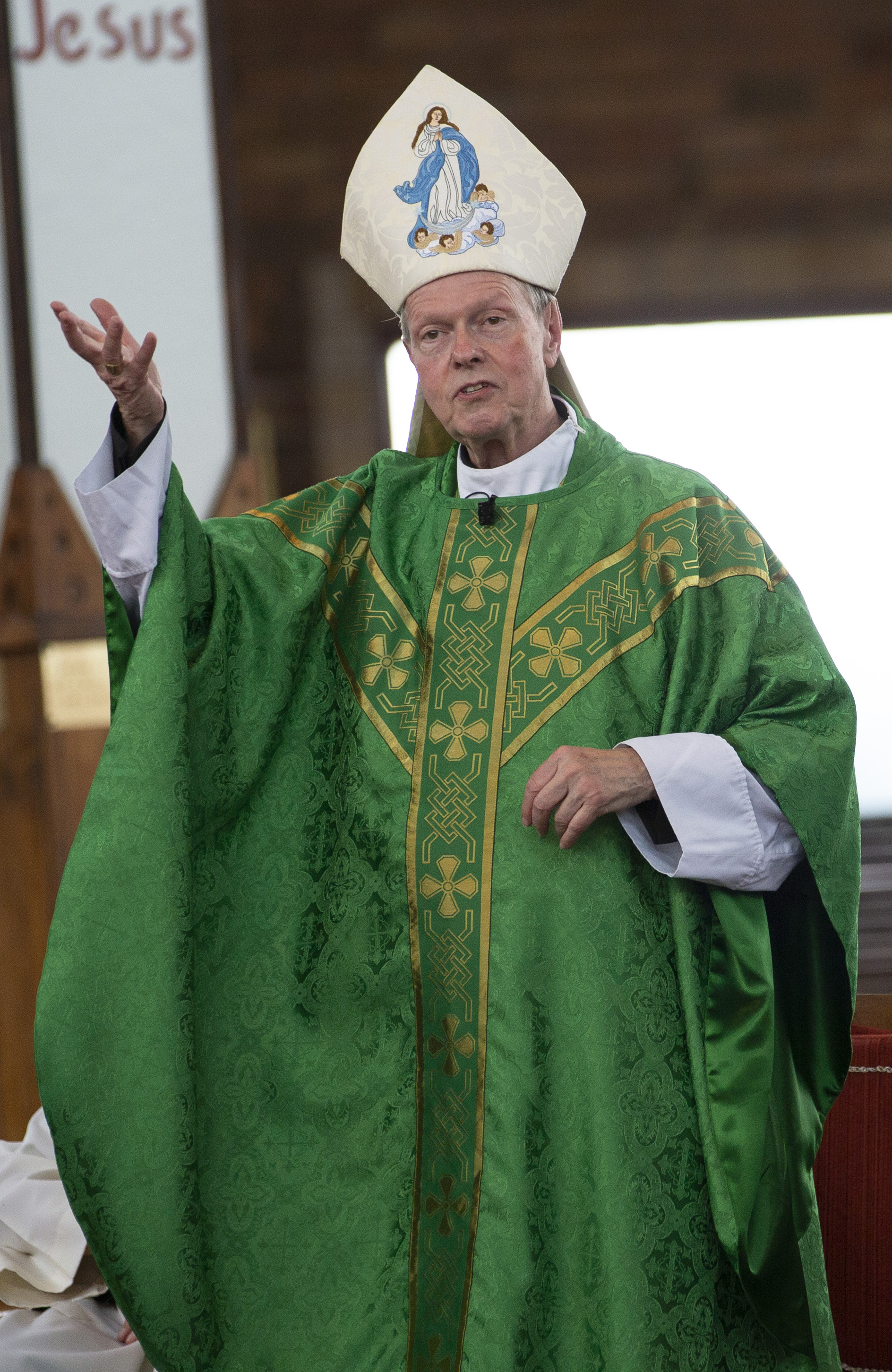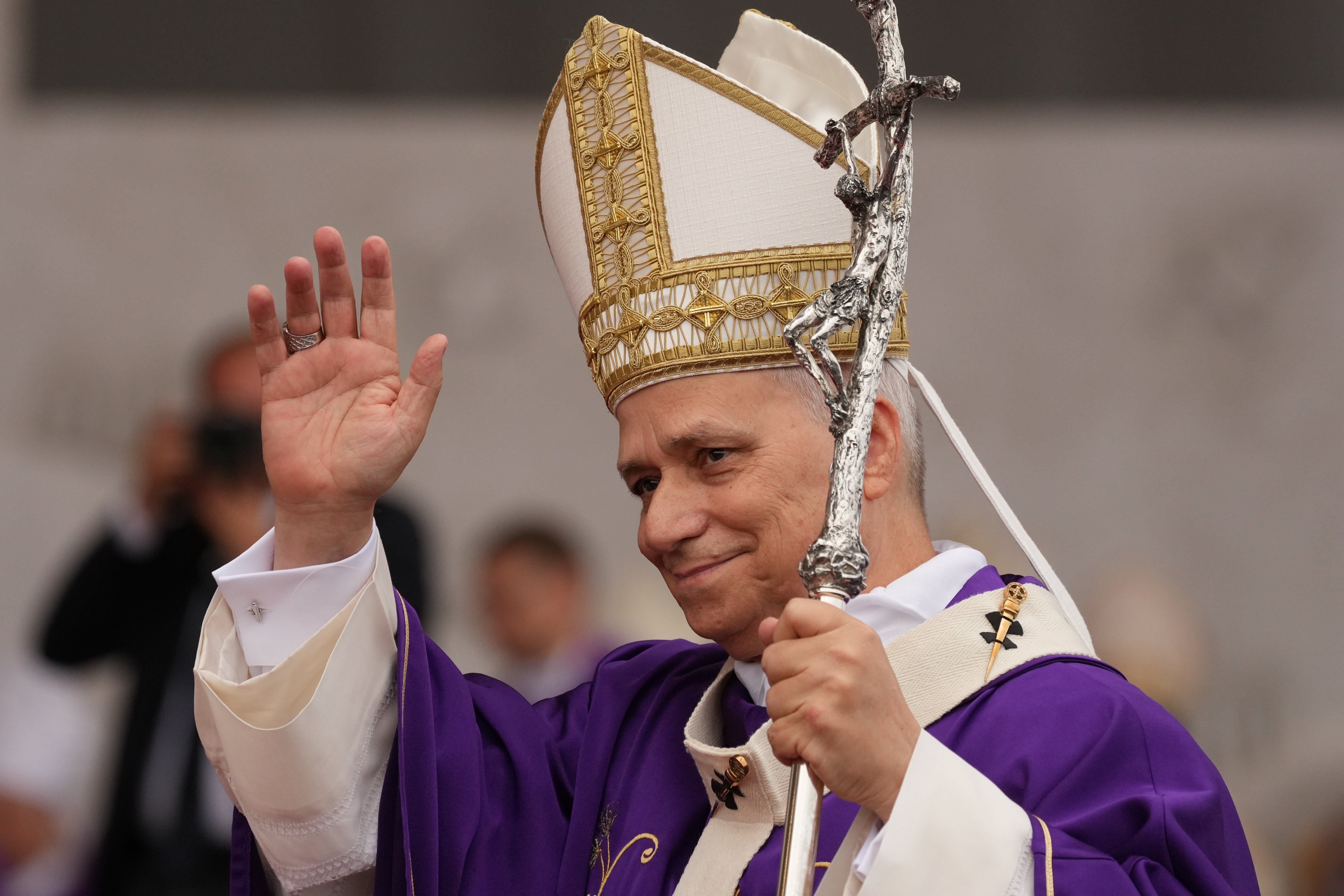July 24, 2024 at 10:29 a.m.
St. Kateri and Native American spirituality
As a lover of history and a Catholic convert, I was immediately drawn to St. Kateri Tekakwitha, whose feast day was celebrated this month on the 14th. Growing up in New York, I was drawn inexorably toward its history and so discovering St. Kateri’s local roots led me to a study of and then a devotion to her.
SHRINE CELEBRATES
FEAST DAY
The inspirational example of St. Kateri Tekakwitha was celebrated at the Saint Kateri National Shrine and Historic Site from July 12-14 in honor of her feast day.
The feast day of St. Kateri Tekakwitha, patron of ecology and the environment and of Indigenous Peoples, was celebrated over the course of three days at the shrine outside of Fonda. Celebrations began with a Spanish Mass on Friday evening and concluded with the semi-annual burning of prayer petitions after Sunday Mass, which fell on St. Kateri’s U.S. feast day of July 14. The occasion was also marked with a Vigil Mass on Saturday and presentation by Dr. Damian Costello, NAIITS, on the Old Testament tribal roots of the Eucharist, to which St. Kateri had a great devotion. As is traditional at the shrine that was the home of this Mohawk-Algonquin saint for most of her life, the penitential rite included purification with Native sacred herbs as the incense and the Four Directions blessing. The sung portions of the Mass took place in Mohawk, courtesy of the Akwesasne Catholic choir.
Anyone interested in learning more about St. Kateri’s life is encouraged to visit her shrine on Route 5 in Fonda, which is operated by Our Lady of the Angels Province, Conventual Franciscan Friars. The grounds, which includes St. Kateri’s baptismal spring and the archaeological site of the Mohawk Village of Caughnawaga, are available to the public year-round. Special events focusing on spiritual, cultural and historical topics are held May through October. For more information about St. Kateri, the shrine or the historical site, please contact [email protected], call 518-853-3646, or visit https://www.kateri
shrine.org.
She was born in the village of Ossernenon, in what is now Auriesville, and lived a typical child’s life until tragedy struck: the village was beset with a smallpox epidemic that killed many, including sadly both of her parents and infant brother. As is the custom of the Haudenosaunee and as her mother had been an Algonquin Christian, she went to live with her father’s sister and her husband, being adopted into the Turtle Clan of their longhouse. The family continued to live there for six more years or so until the French Army burned the village to the ground. After a bitter winter, what remained of the village moved east and across the Mohawk River to Caughnawaga, known today as Fonda, and the current location of the National Shrine & Historic Site of St. Kateri Tekakwitha. She was baptized in the nearby spring and lived most of her earthly life there before relocating to the Mohawk-Catholic village of Kahnawake in Quebec.
She was considered holy even before her death in 1680, and her veneration began almost immediately upon her death. She had an odor of sanctity and the smallpox scars on her face disappeared. Other descriptions of her death by witnesses expressed to them her passage into heaven including a beatific glow and healings from her personal items. She appeared to a few of her friends in visions and the dirt of her grave was taken and used to heal the sick. Her blanket covered a pregnant woman struggling in childbirth and brought her from the brink of death.
Her final and most recent miracle that culminated in her sainthood was in 2006 when a part Lummi Indian boy was infected with a flesh-eating bacteria that brought him to death, and by his own account to heaven and meeting Jesus. The doctors had already prepared his parents for his death. A sister of St. Anne arrived and she and his mother prayed over him with a relic of St. Kateri, which was determined to have stopped the progression of the disease.
I met that sister, Sister Kateri Mitchell, at a diversity series at the Dominican Retreat & Conference Center in Niskayuna. Native American spirituality fits well in Catholicism. In fact, the Jesuits of St. Kateri’s time used many of the Native traditions and ceremonial aspects in teaching the Mohawk about the Catholic religion. The first was the use of smoke. The Jesuits use incense while the Native Americans have a sacred fire and their four sacred plants: cedar, sage, sweetgrass and tobacco. Both assist to ascend their prayers to heaven (Jesuits) and Sky World (Mohawk) where the Creator or Great Spirit is. The plants are burned in an abalone shell and the smoke is drawn out with an eagle feather in purification.
Native American spirituality is rooted upon creation and upon the earth, effectively all that is mentioned in Genesis. They begin their prayers facing east, where the sun rises and the day begins, and then turn to each direction in a sequence that they call sunwise (or clockwise). Much of the prayer is of thanksgiving. Whenever anything is taken from the land, a pinch of tobacco is left in thanks. Tobacco is the most sacred of the plants.
The Mohawk-Catholics of Kateri’s time in Kahnawake virtually created a syncretic religion by combining many of the rituals of theirs with what they were learning in the catechism. They blended the incense with the sacred plants; they prayed outside amidst creation; they offered gratitude to their Creator. They continue to use the purification ceremony in their Masses as well as in reverence to their ancestors and their burial grounds as Catholics do with relics.
As Catholics honor St. Kateri this month, all of us can honor her people and the land they stewarded through acknowledging the past and accepting our part in it.
As part of the mission of the Commission for the Ecumenical and Interreligious Affairs of the Diocese of Albany, we come in humility to recognize the oppressive history and continued dispossession of the Haudenosaunee people, first caretakers of this land. We acknowledge that this unceded seized territory of the Haudenosaunee Confederacy and the Kanien’keha:ka (Mohawk) is the land that we currently sit, work and pray on. We reflect on this with profound gratitude and obligation to the ancestors — past, present and yet to come — as well as maintaining a debt that can never be repaid.
Karen Bond is a parishioner at the Church of the Immaculate Conception in Glenville and a member of the RCDA Ecumenical and Interreligious Commission.
- Celebrate Christmas like a Hobbit
- Trump touts his economic policies as polls show increasing concern
- NY bishops ‘extraordinarily troubled’ by Gov. Hochul’s decision to legalize assisted suicide
- California bishops celebrate ‘very powerful’ Mass in ICE facility for detainees
- Bishop: New Bible translation shows ‘God never changes, but always has something new for us’
- Tennessee faith leaders urge governor to stop all executions
- Amid ‘fragile’ ceasefire, Caritas Jerusalem seeks to ‘replant hope’ in Gaza this Christmas
- Full text: Pope Leo XIV’s Dec. 17, 2025 general audience
- Pope, Israeli president speak by phone about Sydney attack, peace in Gaza
- ‘Make more use of Newman,’ say British church experts








Comments:
You must login to comment.